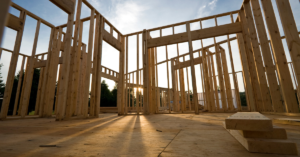Shifts in the Housing Market in 2025

In the first quarter of 2025, the U.S. housing market has exhibited notable trends in home prices, inventory levels, and mortgage rates. These developments are essential for potential buyers, sellers, and investors aiming to navigate the current real estate landscape effectively.
Home Prices
As of January 2025, the median home price in the United States reached approximately $420,000, marking a 4.1% increase from the previous year. This growth rate aligns closely with the long-term average appreciation rate of 3.4%, suggesting a stable yet modest rise in property values. Notably, all 50 of the largest metropolitan areas have experienced year-over-year price growth, a trend reminiscent of the housing boom during the pandemic period.
Inventory Levels
The housing inventory has seen an 11% increase from the previous year, with about 900,000 active listings as of January 2025. This figure represents a 50% rise from 2022 levels; however, it remains below the pre-pandemic inventory levels observed in 2019. The gradual increase in available homes indicates a slow return to more balanced market conditions. Regional variations persist, with areas such as Texas, Florida, and Colorado reporting inventory levels that have surpassed pre-pandemic figures.
Mortgage Rates
Mortgage rates have demonstrated relative stability since the 2024 election, with the average 30-year fixed-rate mortgage hovering around 6.87% as of February 2025. This marks the lowest level since December 2024, offering potential relief for homebuyers as the market approaches its busiest season. Despite this decline, rates remain elevated compared to historical lows, contributing to affordability challenges for many buyers. Economic factors, including potential tariffs and inflationary pressures, continue to influence rate fluctuations, underscoring the importance of monitoring these elements when making purchasing decisions.
Demand for Housing
Despite higher mortgage rates, demand for housing remains robust. Indicators such as the mortgage purchase index have shown stable demand over the past 15 to 18 months. Similarly, Redfin’s demand index indicates that buyer interest has remained relatively unchanged year-over-year, with only a 1% decrease. This resilience suggests that, even in the face of affordability concerns, many buyers are motivated to enter the market, potentially sustaining price stability in the near term.
Mortgage Delinquency Rates
While overall mortgage delinquency rates for conventional loans remain low, there has been a slight uptick in delinquencies among FHA and VA loans, which typically require lower down payments. As of Q1 2025, FHA mortgage delinquencies have risen above 2019 levels, indicating potential financial distress within this segment of borrowers. However, serious delinquencies and foreclosure rates have remained steady year-over-year. This trend warrants close observation, as it may signal emerging vulnerabilities in the housing finance system.
Market Outlook
Looking ahead, industry analysts project that home prices will continue to experience modest growth. The CoreLogic HPI Forecast anticipates a 4.1% year-over-year increase in home prices from December 2024 to December 2025. While inventory levels are gradually improving, they remain below historical norms, suggesting that supply constraints may persist. Mortgage rates are expected to stabilize around 6.5% throughout 2025, contingent upon broader economic conditions and Federal Reserve policies. Potential buyers and investors should stay informed of these trends and consider both national and regional dynamics when making real estate decisions.
All writings are for educational and entertainment purposes only and does not provide investment or financial advice of any kind.







